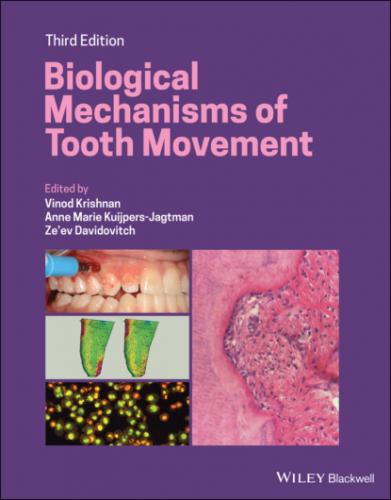Biological Mechanisms of Tooth Movement. Группа авторов
on id="u8e180bbb-565c-562a-a830-a8b4178999a2">
Table of Contents
1 Cover
6 Preface to the First Edition
7 Preface to the Second Edition
8 Preface to the Third Edition
9 PART 1: Evolution of Biological Concepts CHAPTER 1: Biological Basis of Orthodontic Tooth Movement: A Historical Perspective Introduction Orthodontic treatment in the ancient world, the Middle Ages, and through the Renaissance period: Mechanics, but few biological considerations Orthodontic treatment during the Industrial Revolution: Emergence of identification of biological factors Orthodontic tooth movement in the twentieth and twenty‐first centuries: From light microscopy to tissue engineering and stem cells Conclusions and the road ahead References CHAPTER 2: Biology of Orthodontic Tooth Movement: The Evolution of Hypotheses and Concepts Introduction Hypotheses about the biological nature of OTM: The conceptual evolution Bioelectric signals in orthodontic tooth movement Concluding remarks References
10 PART 2: Mechanics Meets Biology CHAPTER 3: Cellular and Molecular Biology of Orthodontic Tooth Movement Introduction Entities important for tooth movement – the players in the game Biomechanical characteristics of the PDL General regulatory mechanisms Effects of orthodontic force application Cell biological processes during relapse and retention Conclusions References CHAPTER 4: Inflammatory Response in the Periodontal Ligament and Dental Pulp During Orthodontic Tooth Movement Introduction Inflammation during tooth movement Inflammatory mediators in OTM Activation of inflammation, apoptosis, and cell cycles of PDL in OTM Response of the dental pulp to mechanical forces Pain during OTM Root resorption and inflammation Root resorption in the cementum Conclusions References CHAPTER 5: The Effects of Mechanical Loading on Hard and Soft Tissues and Cells Introduction Mechanobiology Mechanotransduction in bone tissue Mechanotransduction in periodontal tissues The role of marginal gingiva in orthodontic tooth movement Marginal gingiva is the mechanosensor of the periodontium ATP‐purinoreceptors are mechanosensors in marginal gingiva Conclusions Acknowledgement References CHAPTER 6: Biological Aspects of Bone Growth and Metabolism in Orthodontics Introduction Basic concepts of bone growth and development Genetic mechanisms for environment adaptation Factors influencing bone remodeling and modeling Cortical bone remodeling Trabecular bone remodeling Growth and development of facial bones Temporomandibular joint development and mature adaptation Tooth movement and bone modeling Dental facial orthopedics and bone modeling Calcium metabolism and tooth movement Conclusion
